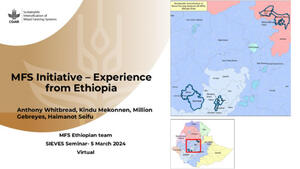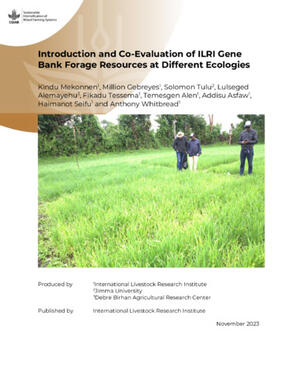
Land use change in the bale mountains eco-region of Ethiopia: Drivers, impacts and future scenarios
Abstract
Livestock has been an integral part of the Bale Mountains Eco-Region landscape for many centuries. This
paper describes the results of a research study undertaken in the region comparing land use change and
livestock movements over a period of eight years from 2008 to 2016. The study provides some insights
into the trends of intensification that have taken place, the challenges of this, and indications of who is
benefiting from these processes and who is not. In 2008 the majority of the area was predominantly
livestock in terms of production systems, with the traditional godantu movement system still functioning
well despite challenges. However by 2016 though livestock numbers have not decreased in all areas,
poverty levels have grown and access to resources for livestock production have become increasingly
difficult for many. Key causes of this is the allocation of land to investors by local governments, trends in
privatisation of resources, and a strengthening of the boundaries of the Bale Mountains National Park.
The paper concludes by making recommendations for reconciling some of the conflicts arising,
particularly over land use, and how land management in the area can be improved.
Citation
Chibssa, W. and Flintan, F. 2017. Land use change in the bale mountains eco-region of Ethiopia: Drivers, impacts and future scenarios. Paper presented at the 2017 World Bank Conference on Land and Poverty, Washington DC, 20-24 March 2017.










